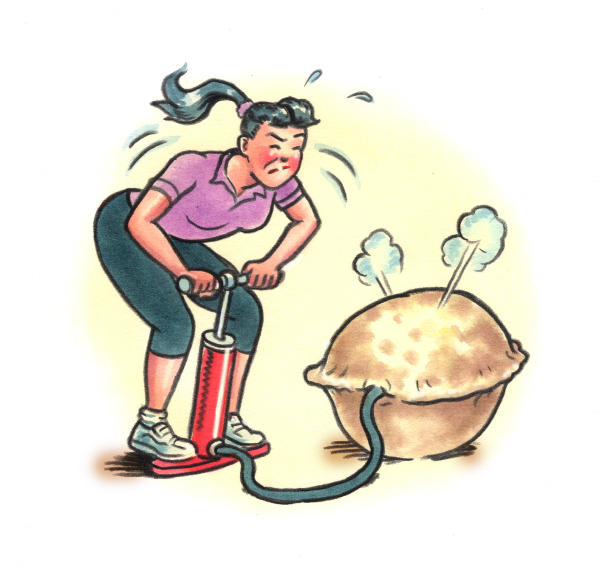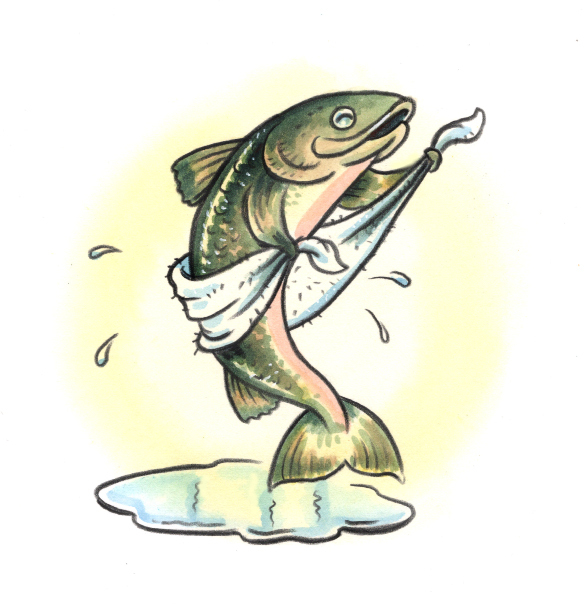
Pita Puffing Problems
Ed Sabbagh, of Beverly, Massachusetts, reached out with an unusual dilemma—his flatbreads are too flat! When baking pita bread, he has struggled to get them to puff, and wondered what was going wrong.
A host of factors can make perfectly puffed pitas difficult to pull off. If the round of dough is too thick, the dough is too dry or the oven temperature is too low, pita breads will struggle to puff. That’s because the puff is steam-powered. For it to work, the dough must be neither too thick nor too thin, and be sufficiently hydrated so that the blast of heat from the oven quickly turns the moisture to steam that inflates the bread. One of the best ways to get this right is a kitchen scale. Measuring by volume can create problems with almost any baked good, but breads such as pita can be particularly susceptible to this inexact approach, as too much or too little flour easily throws off hydration levels. In our testing, measuring flour by volume created enough variance that we often produced dough that was too dry to properly puff. The dry dough also was harder to roll, yielding thicker rounds. The result was pitas that were prone to splitting when (and if) they puffed. So particularly when baking pita, it pays to weigh your ingredients.
Staying Sharp
Looking to keep her knives in top condition, Memphis caller Gail Black asked for advice on the best style of honing rod—stainless steel, ceramic or diamond?
Over time, normal use causes the blades of kitchen knives to curl and flatten (at a microscopic level) and eventually feel blunt. But that doesn’t mean it’s time to sharpen, a process that removes metal from the blade. Instead, the blade should be honed, which straightens it. This is done with a honing rod (also called a steel), a thin rod fashioned from a material hard enough to straighten the blade edge. Traditional honing rods are made from steel and may be smooth, ridged or ovoid (a design that offers more surface area). They tend to last a lifetime, but aren’t as effective with knives made from harder steels. Diamond rods are steel rods coated in diamond dust. They are the hardest of any option, and because of this they sharpen a bit as they hone, but the diamond coating eventually wears off. Ceramic honing rods can be smooth or textured, the latter subtly sharpening as they hone. Ceramic rods can break if dropped, but otherwise last indefinitely—making them our top choice. We like the ceramic honing rod from Work Sharp, which features guides built into the handle, taking all the guesswork out of identifying the blade’s angle. To use a honing rod, hold it vertically, resting its tip on a cutting board or countertop. With the knife blade facing away from you and applying light, even pressure, gently glide each side of the blade along the rod at a 17- to 20-degree angle. The motion should be smooth and controlled, starting from the heel of the blade and ending at the tip. Repeat, aiming for around 5 to 10 strokes per side, or until the edge is sufficiently honed. Routine honing extends a blade’s edge between sharpenings; we recommend honing at least once a week.

A Fish Out of Water
Dan Mawdesley, of Utrecht, the Netherlands, asked for help getting breading and batters to stick when cooking fish. He said they’re sometimes overly watery, and the coatings tend to slide off.
When breading or battering most anything, it often helps to start with a dredge through flour—sometimes followed by an egg wash—which helps the outer coating adhere. But fish (especially previously frozen, as most is) tends to release moisture during cooking, which can weaken that bond. To test how detrimental that is, we breaded and baked thawed frozen cod and haddock, patting some until very dry, but leaving others slightly damp. We then tested them three ways—coated with just panko breadcrumbs; dredged with flour before the panko; and dredged with flour and washed with egg before the panko. In every case, the wetter the fish, the worse the results. In fact, with wet fish we found the flour dredge actually made things worse. That’s because as the starches in the flour absorb excess moisture, they gelatinize and won’t adhere to the fish flesh properly, falling off and taking the panko with them. Battered and fried fish were a bit more forgiving of wet fish if we skipped the flour. But overall, moisture is the enemy. To properly dry the fish, first place the fillets on a paper towel-lined surface (a sheet pan is particularly good for catching any excess moisture) for several minutes, then blot them with additional paper towels. If your fish is especially wet (which some thawed fish can be), repeat the process with fresh paper towels until fully dry.






